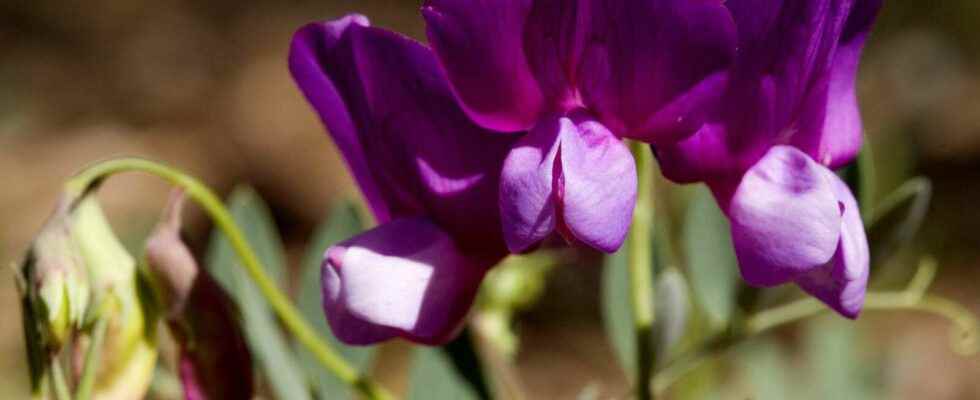From June to the first frosts, take advantage of these flowers with a sweet and musky scent, in the shape of a butterfly and in various shades. Fragrant or not, climbing or dwarf, the choice of sweet pea varieties is not lacking and you will be surprised at its rapid growth. Easy to grow, to make bouquets or enjoy in the garden, sweet peas are always popular with gardeners.
Appellations
From the Fabaceae family (Fabaceae), there are hundreds of varieties of this herbaceous annual of sweet peas (Lathyrus odoratus). Genre Lathyrus has more than 200 species. It is also known as “flower pea” or “fragrant pea”.
Botanical description of the sweet pea
Its long stems fitted with tendrils allow it to cling to the support and are covered with clusters of flowers with colors varied as pink, white, red, pink or two-tone. There are a multitude of climbing varieties, which grow more than two meters high, like dwarfs, which do not exceed 30 centimeters in height.
Here are some varieties of low and dwarf sweet peas:
- ‘Cupid Pink’, two-tone variety, pink and white with a maximum height of 20 cm;
- ‘Bijou’, sweet peas in pastel shades on stems that are 55 cm high;
- ‘Little Sweet Heart’ variegated, sweet pea color mix not exceeding 25cm in height;
- ‘Cupid’ variegated, butterfly-shaped flowers in various colors that measure between 30 and 50 cm in height.
Also discover climbing varieties such as:
- ‘America’, with white flowers streaked with red, very fragrant which can climb up to three meters;
- ‘Cupani’, a variety with half-purple, half-violet flowers that give off an intoxicating fragrance, with stems that can climb up to 2.50 meters;
- ‘Butterfly’, with very fragrant pale pink flowers that can reach more than three meters in height;
- ‘Painted Lady’, with semi-pink, semi-white flowers, with an intense fragrance, with stems that climb to a height of three meters;
- ‘Henry Eckford’, with original red-orange, very fragrant flowers that can reach two meters in height.
Once flowering is complete, flat pods develop and give way to seeds which can be re-sown or stored for sowing the following year.
Origins of the sweet pea
The sweet pea is native to the south-east of Italy and more particularly to Sicily.
Sweet pea cultivation requirements
Sowing is carried out from April, in buckets to replant them, in their final place, between April and May and can be done directly in the garden in May, in the hottest regions. Choose a location at sun. Make bouquets throughout the culture. Remove faded flowers regularly. Do not hesitate to guide the stems to give the desired silhouette to your sweet pea. During cultivation, remember to remove the pods so as not to slow down flowering, then leave them there from August onwards in order to be able to collect the seeds.
Use of sweet pea
Most often, we find the sweet pea climbing on a typical support trellisfence or palisade, but you can also choose dwarf varieties to flower a foreground of massive or a hotpot. Let a sweet pea colonize a railing or one low wall in order to bring color to these constructed elements. On the border, pot or hanging basket, favor dwarf varieties.
Sweet peas are low-maintenance and quickly cover a corner of the garden with their bright or pastel-hued blooms. Trellis, fence, hotpot or bouquet, the sweet pea occupies the ground! Use its charms shades and its long flowering!
You will also be interested
Interested in what you just read?
